In this ultimate guide, we look at inside-out vs outside-in VR tracking. Learn about how each method keeps track of your headset movement and position and the pros and cons of each.
Head tracking method is one of the biggest factors in determining which VR headset to buy. Our VR Headset Comparison Tool shows you some other important factors to compare.
Let’s dive in!
The Evolution of VR Tracking Methods
Historical Development of VR Tracking
The concept of virtual reality (VR) tracking has been around since the creation of VR technology itself. The first tracking forms were primitive, often relying on physical tethers or limited sensor setups. As technology advanced, so did the tracking methods, with the development of Outside-In and Inside-Out tracking systems.
Outside-In tracking, the original method for VR position tracking relies on external devices to scan and monitor the headset’s movements in real-time. This method was popularized by systems like the HTC Vive, which use base stations as external trackers.
Other examples of VR headsets that use outside-in tracking include the original Oculus Rift and Playstation VR, both of which come with their own positional trackers.
On the other hand, Inside-Out tracking reversed this process by placing cameras on the headset itself, eliminating the need for external sensors. This technology was brought to the forefront by devices like the Oculus Quest, which uses onboard cameras to track the user’s position and movements.
Future Trends in VR Tracking
With the rise of mixed reality (MR) and augmented reality (AR) technologies, inside-out tracking is expected to become increasingly common due to its mobility advantages.
In fact, all of the latest and most advanced VR headsets, like the Apple Vision Pro and Meta Quest Pro, are inside-out.
The development of AR glasses by major companies such as Meta and Apple will likely drive further improvements in inside-out tracking and overall VR technology.
Outside-In VR Tracking
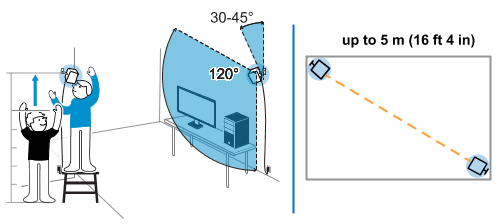
How Outside-In Tracking Works
In an Outside-In system, base stations or external sensors in a fixed location scan the viewable area. Markers in your VR headset and controllers are detected by the base station, and your headset’s position is read multiple times per second.
As you move your head around in virtual reality, the outside-in tracker helps readjust the position of your game in real-time.
Real-world Applications and Examples
Outside-In tracking has been effectively used in several high-end VR systems. The HTC Vive, Oculus Rift CV1, Playstation VR, Valve Index, and all Pimax models use this tracking method.
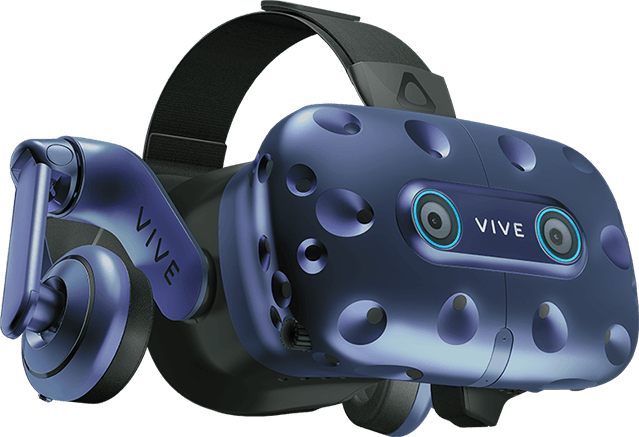
Pros and Cons
Pros:
- High level of accuracy
- Low latency in tracking movement
- Ability to improve accuracy with multiple trackers
Cons:
- Cannot change where you play your VR headset without recalibrating
- Need to be aware of objects in the path of your base station (occlusion)
VR Headsets with Outside-In Tracking
- Oculus Rift CV1
- HTC Vive (all models)
- Playstation VR
- Valve Index
- Pimax (all models)
Limitations of Outside-In Tracking
A major limitation of outside-in tracking is occlusion, or the issue of objects getting in the way of the external sensors. The tracking system can lose the user’s position when they move out of the sensors’ field of view or when an object obstructs the view.
Inside-Out VR Tracking
How Inside-Out Tracking Works
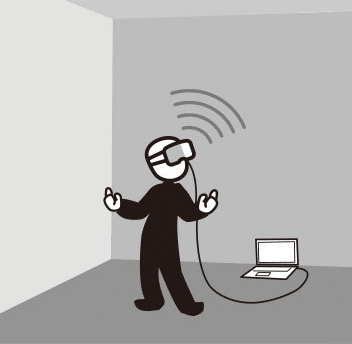
Inside-out tracking is entirely self-contained within your VR headset. Cameras installed facing outward from the headset keep track of your position and movement in real time.
As you move, the cameras consider your before and after positions and render the image in your headset accordingly.
Real-world Applications and Examples
Inside-out tracking is commonly used in portable and user-friendly VR systems like the Meta Quest and Quest 2, Oculus Rift S, HP Reverb G1 & G2, and the Apple Vision Pro.
Pros and Cons
Pros:
- You can use your VR headset wherever you want
- No need to install external sensors in your room
Cons:
- VR tracking is done in the headset, which takes up processing power
- Tracking is not as accurate as outside-in systems
VR Headsets with Inside-OutTracking
- Meta Quest and Quest 2 and Pro
- Apple Vision Pro
- Oculus Rift S
- HP Reverb G1 & G2
- Samsung Odyssey+
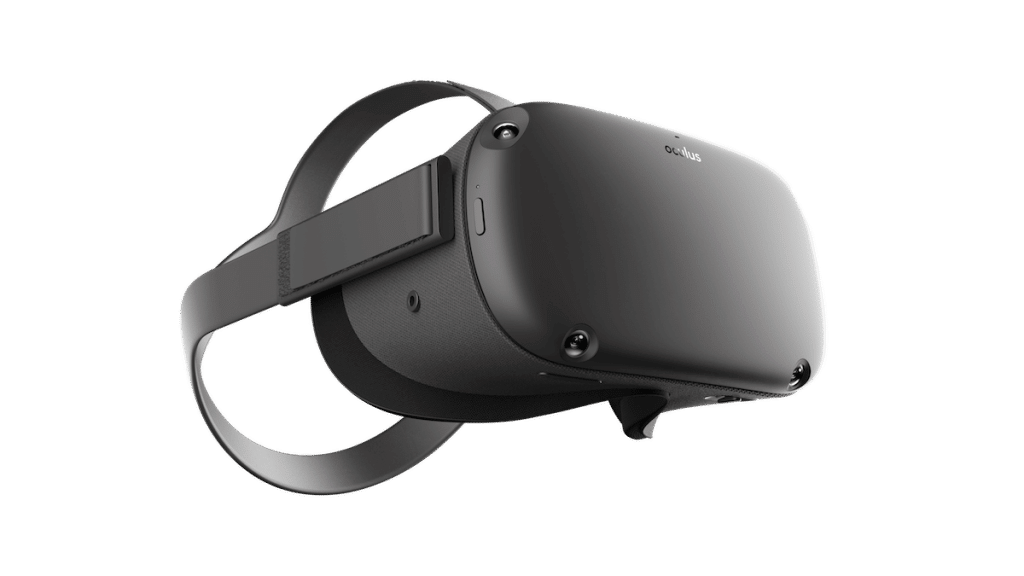
Limitations of Inside-Out Tracking
The main limitations of inside-out tracking include less accurate tracking than outside-in systems and the requirement for the headset to perform all computational work, which can lead to increased latency.
Furthermore, the system can struggle to track users’ position in environments with less distinctive features, such as plain or uniform-colored walls.
Comparing Outside-In vs Inside-Out VR Tracking
As VR technology continues to evolve, so do the methods used to track movement and position in virtual spaces. The two current dominant methods, Outside-In and Inside-Out tracking, present different advantages and drawbacks.
Accuracy and Latency: A Comparison
When it comes to accuracy, Outside-In tracking is often seen as superior. Systems like the HTC Vive and PlayStation VR 1, which use this method, provide high precision and low latency. These systems use external sensors or “lighthouses” to track the headset and controllers’ movement around the room.
Conversely, Inside-Out tracking, though improving, generally struggles more with accuracy and latency. This is because the cameras and sensors are located on the headset itself and can lose track of controllers when they’re not within the field of view.
However, as technology and AI improves, the gap in accuracy and latency between Outside-In and Inside-Out tracking is closing or even swapped.
Mobility and Flexibility: A Comparison
On the mobility front, Inside-Out tracking has a clear advantage. Because it doesn’t require external sensors or a fixed play area, users can take their VR experience anywhere. This is particularly important for devices like the Oculus Quest, which are designed to be portable and easy to use.
On the other hand, Outside-In tracking requires a dedicated play space with mounted sensors or base stations. Moving the system or changing the play area requires a recalibration of the sensors, making it less flexible and portable.
The Impact of Tracking Method on User Experience
The user experience is highly influenced by the tracking method. Outside-In tracking can provide a more seamless and immersive experience due to its higher accuracy, but the necessity for a dedicated play space can be inconvenient for some users.
Inside-Out tracking, while potentially less precise, offers increased flexibility. Users can jump into VR wherever they are without needing a complex setup or dedicated space. This contributes to a more accessible and convenient VR experience, even if it sacrifices a degree of precision.
Alternative Techniques and Emerging Trends in VR Tracking
As with any rapidly evolving technology, the field of VR tracking is subject to ongoing research and development, leading to alternative techniques and emerging trends.
Redirected Walking: An Innovative Approach
One intriguing technique is known as redirected walking. This method exploits our inability to walk in a straight line when deprived of visual cues. By subtly manipulating the user’s trajectory in VR, they can be led to believe they’re following a straight path when in reality, they are walking in a large circle.
While this method currently requires a large play space, it represents a fascinating approach to spatial and positional tracking in VR.
Latest Research and Developments in VR Tracking
Looking forward, there are several ongoing research projects and emerging trends in VR tracking. These include improvements in computer vision algorithms for better Inside-Out tracking accuracy.
Sensor fusion techniques to combine data from different types of sensors, and the development of predictive tracking algorithms to anticipate user movements and reduce latency.
Machine learning is also becoming increasingly important in VR tracking, with the potential to improve the accuracy and efficiency of Inside-Out systems vastly.
While it is difficult to predict exactly which direction future developments will take, it is clear that the field of VR tracking is set for continued innovation and improvement, with the potential to enhance the VR experience for users greatly.
Inside-Out vs Outside-In: Which VR Tracking Method is Better?
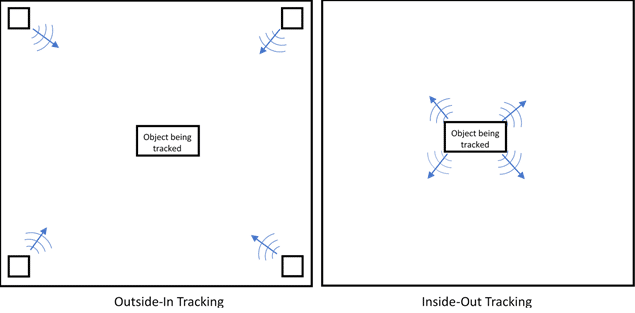
For commercial virtual reality applications, outside-in tracking is the most accurate solution. Base station tracking happens separately from the headset, and position data is communicated back to the PC on its own. Your movement is tracked in real-time and you will have the most seamless VR experience.
Inside-out tracking is good enough for personal or casual virtual reality applications. Most users will not notice any latency or inaccuracy in motion or position. Inside-out VR tracking is still in its first generation and will improve as technology improves. Plus, not requiring any external base stations makes your install more flexible and keeps your costs down.
In the next few years, Apple and other major companies will release augmented reality glasses. These glasses will utilize inside-out technology, driving further augmented and virtual reality improvements.
What do you think is the best VR tracking method?
Comment down below and let us know if you agree with us or not!

